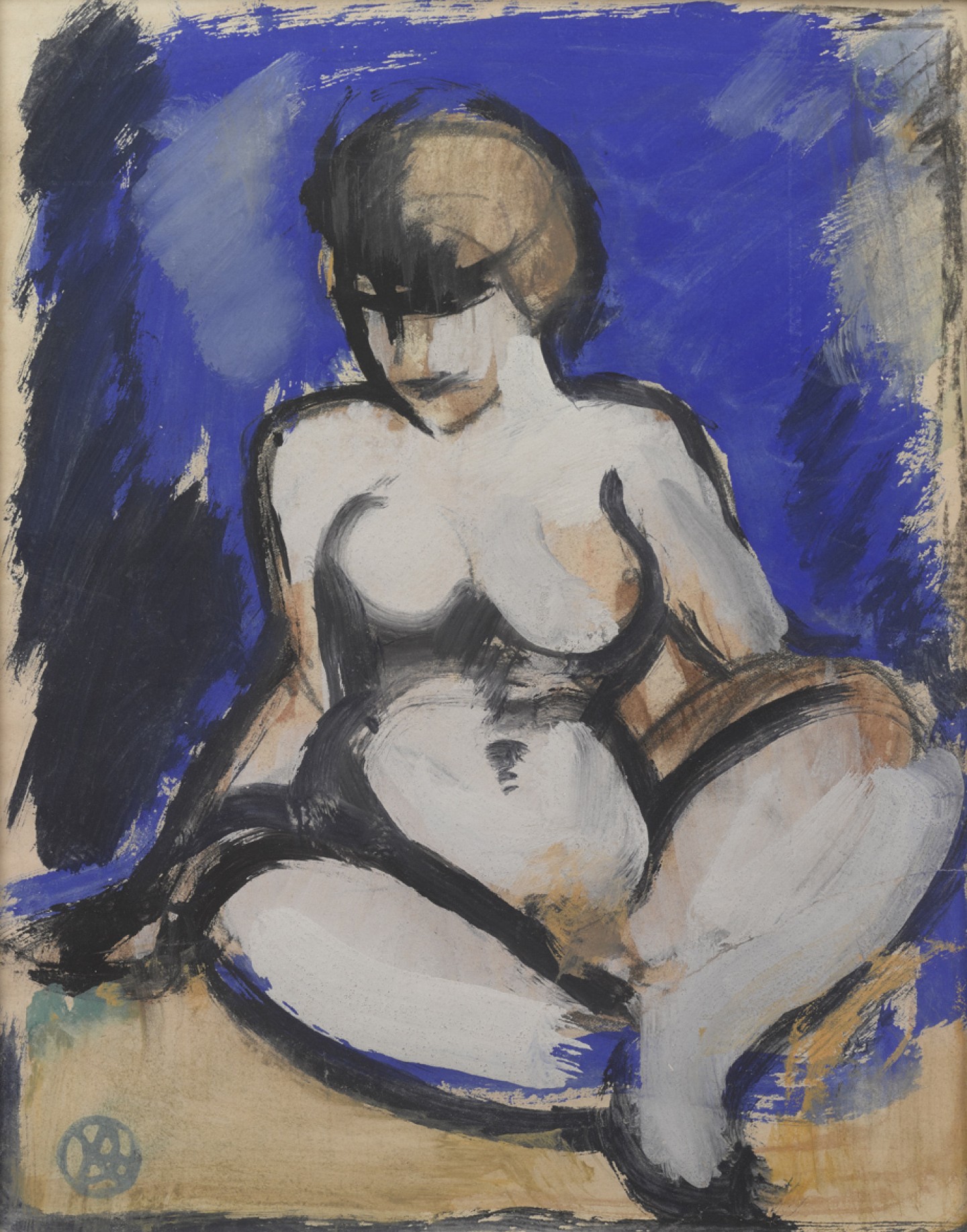DESCRIPTION
Unlike his fellow colourists, Fergusson had spent little time painting in Scotland following his move to Paris in 1907. However, he made a tour of the Highlands in 1922 and 1928 and staged two exhibitions of the works. His output revealed a growing interest in Cezanne fused with the restless machine aesthetic of Vorticism which he had deployed in a series of paintings of Destroyers at the Royal Navy Docks, Portsmouth. A distant echo of his Rhythm paintings resonates. The Highland series comprised his first solo show in Scotland, staged in Edinburgh and Glasgow in 1923.
DETAILS
-
Artist
John Duncan Fergusson
-
Date
1928
-
Medium
Oil on canvas
-
Object number
307
-
Dimensions unframed
55.9 × 61 cm
-
Dimensions framed
83 × 78 cm
-
Place depicted
Scottish Highlands (2646943)
-
Subject
-
Copyright
© Courtesy of The Fergusson Gallery, Perth & Kinross Council
ARTIST PROFILE
John Duncan Fergusson RBA, 1874-1961
Born in Leith, John Duncan Fergusson’s youthful determination to become an artist was underwritten by his wine merchant father, leading to stints at two Paris Académies in the 1890s while on painting trips abroad. He finally settled in Edinburgh where his close friendship with Peploe led to a shared commitment to painting highly accomplished works that echoed the techniques of old masters and French moderns.
His full time move to Paris in 1907 plunged him into the social and artistic ferment with its exhibitions of Picasso, Matisse and Braque. Within months he was showing radical new work, influenced by the Fauves, at the progressive Salon d’Automne. In time Fergusson allied himself to a splinter group of the Fauves known as the Rhythmists, becoming founding art editor of its journal.
A well-built, handsome swagger of a man, Fergusson had always been drawn to charismatic, confident women. The love of his life was Margaret Morris, one of the most innovative choreographers of the early 20th Century, whom he met in Paris before WW1.
The couple spent the war years in London moving back to France between the wars, where Fergusson’s produced a stream of landscapes and portraits that harked back to his pre-war colourist period and absorbed the innovative techniques of cubism. In 1939, Fergusson and Morris settled in Glasgow, where they remained for the rest of his life, revered as the Grand Old Man of the Scottish avant-garde.









